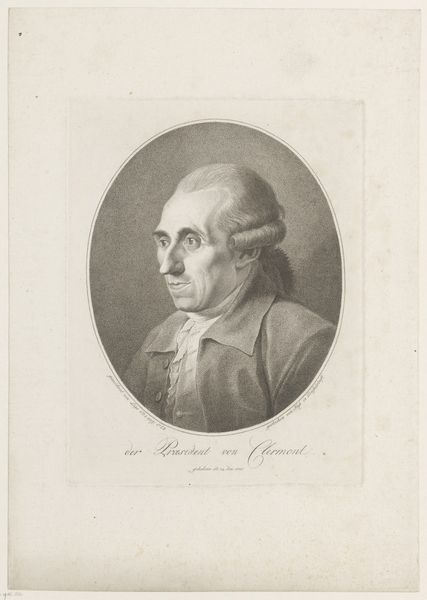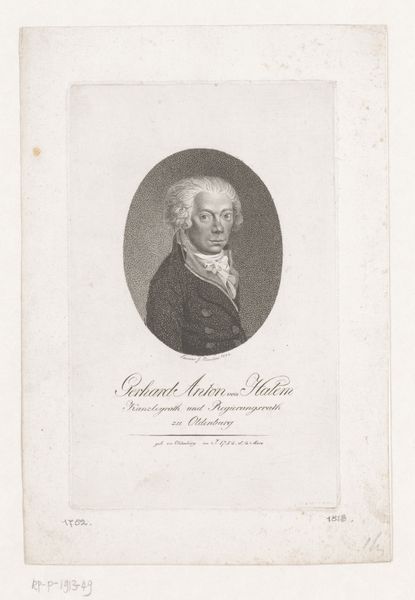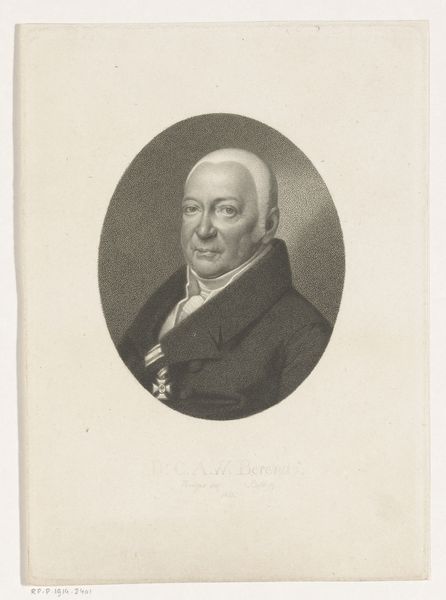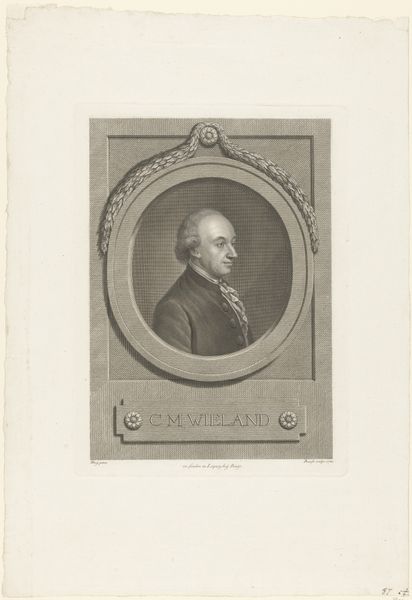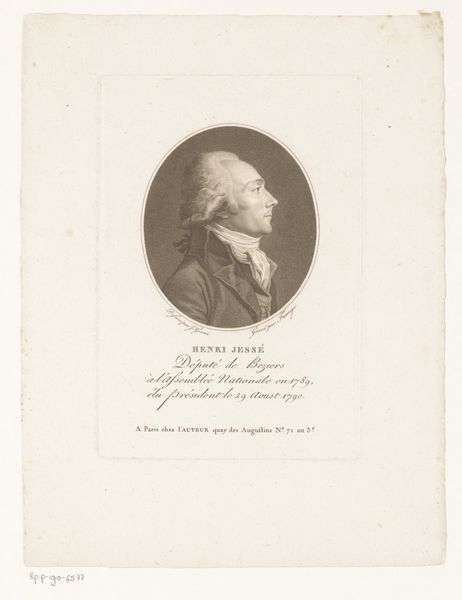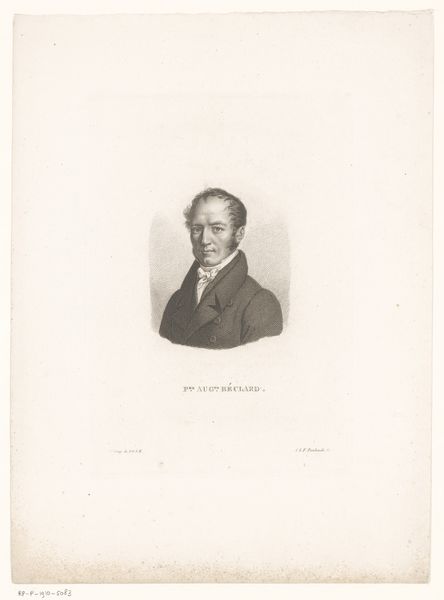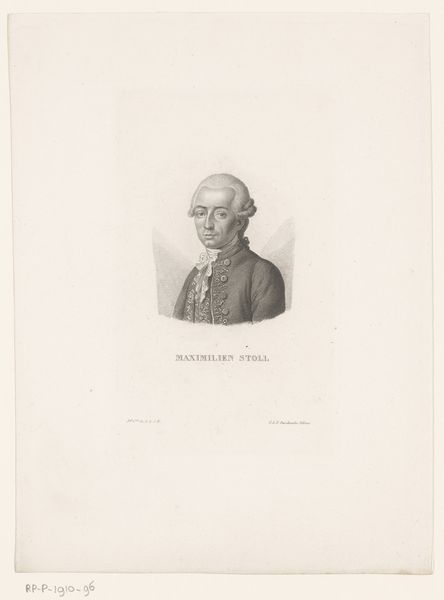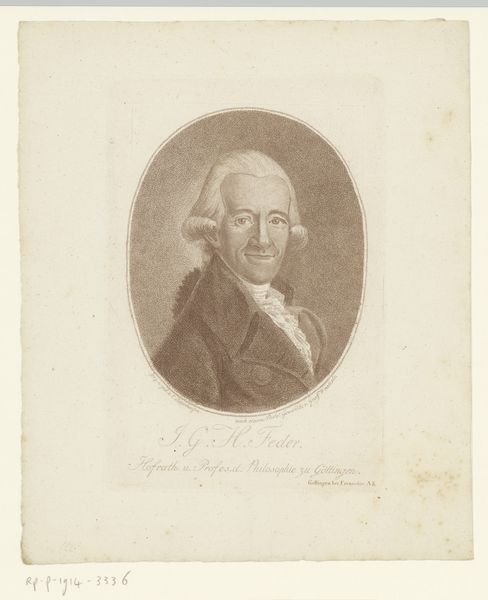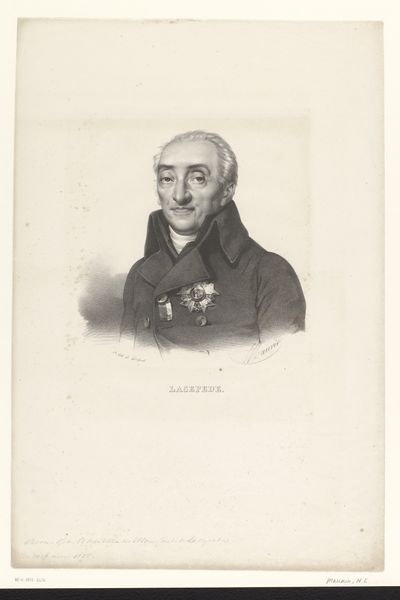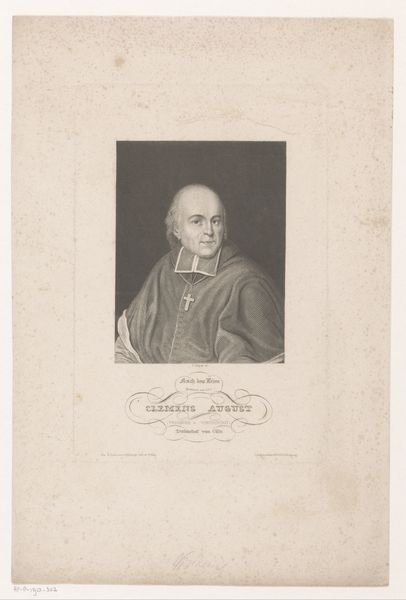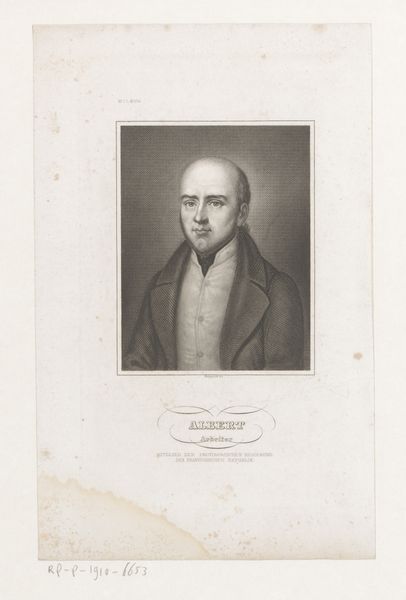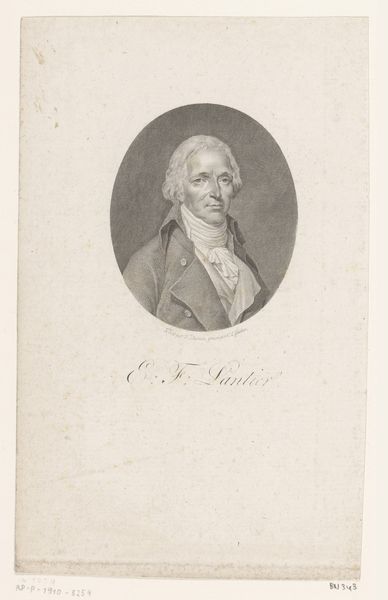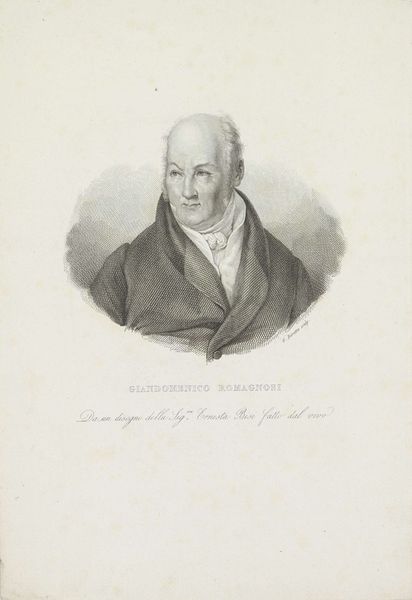
drawing, pencil
#
portrait
#
pencil drawn
#
drawing
#
neoclacissism
#
pencil drawing
#
pencil
Dimensions: height 256 mm, width 203 mm
Copyright: Rijks Museum: Open Domain
Curator: Looking at this pencil drawing, "Portret van Paul Wolfgang Merkel," dating roughly from 1800 to 1863 and created by Ludwig Emil Grimm, I’m immediately drawn to the stark contrast. The artist skillfully builds form using simple materials, making me consider the very process of portraiture at this time. Editor: It feels reserved, doesn't it? His gaze is direct but not confrontational, encased in that austere oval frame— almost like a cameo or a neoclassical emblem. There's a feeling of civic pride or perhaps dutifulness conveyed through the minimal setting. Curator: Yes, and considering it's a pencil drawing, we might think about the role of drawing academies at that time, or how prints reproduced this kind of likeness for a broader public. The very material used, pencil, is unassuming but capable of remarkable detail. The precision necessary points to the labor involved. Editor: Labor indeed! But the symbols he carries -- his rather plain dark coat and modest white ascot – points to professional or scholarly status achieved, I suspect, through rigorous civic engagement. The visual austerity speaks of self-control, which became an important personal quality associated with neo-classical art during that period. Curator: Absolutely, this reflects that movement; however, beyond aesthetic expression, it mirrors the production constraints. Pencil allowed for widespread replication via engravings; hence, it serves a democratic function by disseminating portraits beyond elite circles. How accessible were painting materials then compared to pencils? It raises crucial questions of value and the art market. Editor: And yet, I wonder about his life -- his hopes, fears. What psychological presence did Grimm capture here? The lack of ostentation can feel oppressive; even in its simple medium, it shows its symbolic weight. I suspect this person would not let any emotions be known. Curator: Agreed, it is a very controlled image! However, even control becomes another material element. The means used informs not just what we see, but how the sitter wanted to be viewed in relation to his society. A stark record then— in process, material and the man presented. Editor: Precisely! And the layers of that visual language endure in a relatively unassuming portrait like this.
Comments
No comments
Be the first to comment and join the conversation on the ultimate creative platform.
